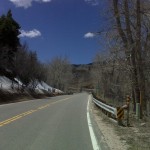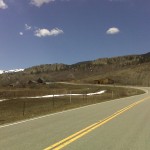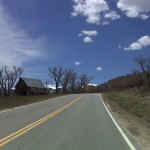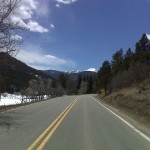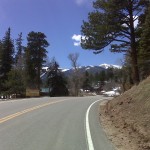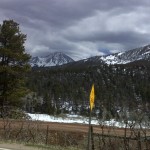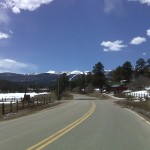It’s no secret that I’m not much of a mountain biker. After last year’s 24 Hour of Grand Targhee I said, “No more mountain bike races! … with one exception ERock!” 24 Hours of ERock is only a couple hours from home and I really enjoyed it last year. The event is relatively low key. The other riders are all super-friendly and supportive. The atmosphere reminds me of a road bike ultra, with a lot more dust and loud music.
Last year’s ERock was the first race of any kind I’d ever won so it was odd for me to be in the position of having other racers wanting to “beat” me. While I do prefer winning to not, I always set my goals for a race independent of other riders. I don’t want to feel like my goal is out-of-reach before the start if say, Kristin Armstrong decides to come out of retirement and try her legs at ultracycling. It’s important for me to have a goal that is both challenging and attainable. I need a target that can motivate me even if I’m out classed by the field or if no other riders show up. I’d finished 25 laps in 2009. My goal for this year was 29 laps…actually it was originally 27, then 28, then a few weeks before the race I thought I had an outside chance at getting 29.
The women’s field was much stronger this year than last. Six solo women started, as opposed to four in 2009. The sixth place woman rode one more lap than the second place woman in 2009. Optic Nerve sponsored XC rider, Kim Godfrey, finished second. Elizabeth Boese who’s started focusing on 12 and 24 hour MTB races and posting some good results, finished third. I was also impressed with the 4th place woman, who rode continuously for 24 hours with only short breaks, and finished her last lap during the last hour. I have great respect for someone with the inner will to get out there for one final lap when it makes no difference in the overall results. I’ve only managed it once in five 24-hour MTB races.
The race begins with a Le Mans start. That means running. If I could still run without hip pain I’d probably not be biking so much, and if I wanted to run with a bike I’d do cyclocross. I tried to line up out-of-the-way, as close to the front as possible, planning to run/walk only fast enough to get me to the bike mounting area not too far behind the next-to-last racer.
The first few laps I was going too hard and was trying to ratchet back my effort on the climb. After a couple laps, Jen told me I was in second by a few minutes, and I said something brilliant like, “I’m not going to catch her by riding faster.” Meaning I didn’t think I had as much speed as some of the other women so I’d need to make up time in other ways. I was pretty surprised when I passed Elizabeth after a few more laps. I think it was all due to Jen, who was crewing me. It was so windy last year that we’d decided not to bother with a tent and crew from her s.u.v. in the parking lot. She set an alarm to meet me beside the trail after each lap with fresh batteries and bottles and we were doing fairly fast pit stops. I have no doubt that Jen’s work during the race was worth at least two laps.
I’ve done most of my training on my road bike this year, which meant I had plenty of pedal revolutions in my legs, but almost no time on my mountain bike. I think my longest mountain bike ride since Targhee, last August, was 1.5 hours. And I’d only ridden that long once. Halfway through the race my butt was uncomfortable, but my hands and arms were hurting so much I did not see how I’d be able to continue for 12 more hours. Near the end of the race, I was reminded of ultrarunner Ann Trason’s quote, “It hurts up to a point and then it doesn’t get any worse.” My hands and arms still hurt, but not any worse. And my neck and shoulders felt a little better.
By the time I’d finished 21 laps, about 16 hours into the race, I’d built up a bit of a lead, and it was a good thing. During the 21st lap I’d started feeling very dizzy and by the end of the lap I felt like I was going to pass out. I signaled Jen to meet me at the car. I laid down and tried to figure out what was wrong. My symptoms were similar to the time I’d gotten hyponatremia at Barr Trail Mountain Race (how I managed that during a 13 mile run is another story) so I thought I might have had too much water. Then Jen said, “I’ve only used one gallon of water and a half bag of ice.” I hadn’t drunk all of that. That meant I’d had less than 10 ounces of fluid per hour. Even for me, mostly riding at night, that was not enough water. I drank some plain water, took a couple more Endurolytes, and felt a little better after a few minutes. After about a 30 minute break, I headed back out, but I was very conscious of keeping my effort relaxed and drinking lots of fluid. I felt better, but I had to stop and pee on every one of my last seven laps.
Jen had more confidence than I. I didn’t know until after the race that after my first lap she’d predicted on her Facebook page that I’d meet my goal of 29 laps. Between laps 16 and 25 I thought there was no way I’d come close. I was just slogging away, one lap at a time.
I’m guessing this really was my last mountain bike race. If for no other reason than I don’t expect my 20 year-old Kona with the patched together Marzocchi Z2 Bomber to survive another 24-hour race. In fact I was pretty surprised to get through this race with no major mechanical failures.
ERock is a fun, smoothly organized event. I was especially happy to see more solo women out there challenging themselves and doing strong rides!
Some good photos of the race by ultrarob. More ERock photos by camrewop.



























